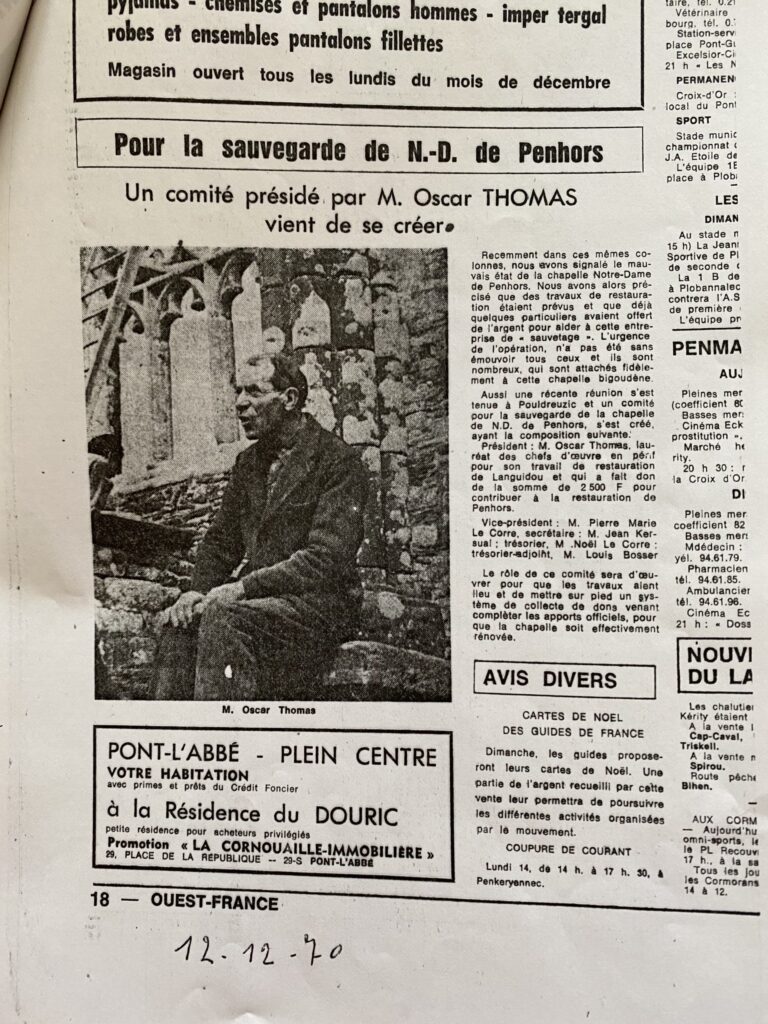The chapel was built on a site occupied by men since antiquity, Gallo-roman pottery was discovered nearby. We assume this place was home to an ancient pagan site as a stream passes through as in many druidic sites. The name Penhors comes from Breton “pen” which means head or extremity, and “hors” which means a reed in reference to the marshy area that surrounded the site.

Construction began at the end of the 13th century if we refer to inscriptions found in Languidou dating from that period. Emblematic of the Pont-Croix school, the chapel was originally rectangular in shape, and was then redesigned at different times, especially in the 16th century to find the shape of today with two side chapels forming a false transept. Also at this period trace of the chapel’s attachment to the priory of Locmaria in Quimper.

Penhors is a sailors’ chapel that was a landmark on a dangerous and poorly mapped coast where there were many shipwrecks. The bodies washed up by the sea were buried in the cemetery that surrounded the chapel until the 19th century. On January 18, 1720 two sailors from the “Annonciade” from Marseille were buried there, as well as several sailors from the “Veine de Nantes” on March 13, 1734 and a sailor from the “Diamant de Nantes” on December 3, 1673. The last burial took place in 1870.
The chapel was sold as a national asset during the Revolution and bought for the township by Le Vigouroux June 4, 1795. It became communal property at the end of the revolutionary period in 1870.
In 1963 the chapel was classified a historical monument. And a subscription started by Mr. Oscar Thomas in 1970 saved it from ruin the first time.

